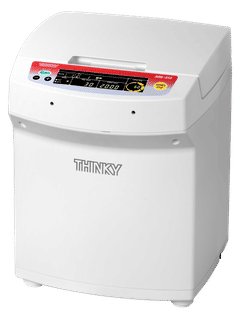Leuprorelin (INN) or leuprolide acetate (USAN) is a gonadotropin-releasing hormone agonist (GnRH agonist).
Mode of action
By causing constant stimulation of the pituitary GnRH receptors, it initially causes stimulation (flare), but thereafter decreases pituitary secretion (downregulation) of gonadotropins luteinizing hormone (LH) and follicle-stimulating hormone (FSH).
Clinical usage
Like other GnRH agonists, leuprolide may be used in the treatment of hormone-responsive cancers such as prostate cancer or breast cancer, estrogen-dependent conditions (such as endometriosis or uterine fibroids), to treat precocious puberty, and to control ovarian stimulation in In Vitro Fertilization (IVF). It is considered a possible treatment for paraphilias.[1] A 2005 paper suggested it as a treatment for autism,[2] but used on children or adolescents it could cause disastrous and irreversible damage to sexual functioning, and there is no scientifically valid or reliable research to show its effectiveness in treating autism.[3] It is under investigation for possible use in the treatment of mild to moderate Alzheimer's disease.[4]
Approvals
- Lupron® Injection (5 mg/mL for daily subcutaneous injection) was first approved by the FDA for treatment of advanced prostate cancer on April 9, 1985.
- Lupron® Depot (7.5 mg/vial for monthly intramuscular depot injection) was first approved by the FDA for palliative treatment of advanced prostate cancer on January 26, 1989, and subsequently in 22.5 mg/vial and 30 mg/vial for intramuscular depot injection every 3 and 4 months, respectively. 3.75 mg/vial and 11.25 mg/vial dosage forms were subsequently approved for subcutaneous depot injection every month and every 3 months, respectively for treatment of endometriosis or fibroids. 7.5 mg/vial, 11.25 mg/vial, and 15 mg/vial dosage forms were subsequently approved for subcutaneous depot injection for treatment of children with central precocious puberty.
- Viadur® (72 mg yearly subcutaneous implant) was first approved by the FDA for palliative treatment of advanced prostate cancer on March 6, 2000.
- Eligard® (7.5 mg for monthly subcutaneous depot injection) was first approved by the FDA for palliative treatment of advanced prostate cancer on January 24, 2002, and subsequently in 22.5 mg, 30 mg, and 45 mg doses for subcutaneous depot injection every 3, 4, and 6 months, respectively.
Leuprolide acetate is marketed by Bayer AG under the brand name Viadur®, by Sanofi-Aventis under the brand name Eligard®, and by TAP Pharmaceuticals under the brand name Lupron®. It is available as a slow-release implant or subcutaneous/intramuscular injection.
In the UK, leuprorelin is marketed by Wyeth as Prostap SR®(one month injection) and Prostap 3® (three month injection).
References
- ^ Saleh F, Niel T, Fishman M (2004). "Treatment of paraphilia in young adults with leuprolide acetate: a preliminary case report series.". J Forensic Sci 49 (6): 1343-8. PMID 15568711.
- ^ Geier M, Geier D (2005). "The potential importance of steroids in the treatment of autistic spectrum disorders and other disorders involving mercury toxicity.". Med Hypotheses 64 (5): 946-54. PMID 15780490.
- ^ Testosterone regulation. Research Autism (2007-05-07). Retrieved on 2007-08-19.
- ^ Doraiswamy PM, Xiong GL. (2006 id = PMID 16370917). "Pharmacological strategies for the prevention of Alzheimer's disease.". Expert Opin Pharmacother 7 (1): 1-10.
| Sex hormones and related agents (primarily G03, also L02, H01C) - human endogenous in CAPS |
|---|
Progestogens:
(receptor) | PROGESTERONE, Desogestrel, Drospirenone, Dydrogesterone, Ethisterone, Etonogestrel, Ethynodiol diacetate, Gestodene, Gestonorone, Levonorgestrel, Lynestrenol, Medroxyprogesterone, Megestrol, Norelgestromin,
Norethisterone, Norethynodrel, Norgestimate, Norgestrel, Norgestrienone, Tibolone
Selective progesterone receptor modulator: Asoprisnil, CDB-4124
Antiprogestogen: Mifepristone |
|---|
Androgens:
(receptor) | TESTOSTERONE, Androstanolone, Fluoxymesterone, Mesterolone, Methyltestosterone, (see also anabolic steroids)
Antiandrogens: Bicalutamide, Cyproterone, Flutamide, Nilutamide, Spironolactone |
|---|
Estrogens:
(receptor) | ESTRADIOL, ESTRIOL, ESTRONE, Chlorotrianisene, Dienestrol, Diethylstilbestrol, Ethinylestradiol, Fosfestrol, Mestranol, Polyestradiol phosphate
Selective estrogen receptor modulator: Bazedoxifene, Clomifene, Fulvestrant, Lasofoxifene, Raloxifene, Tamoxifen, Toremifene
Aromatase inhibitor: Aminogluthetimide, Anastrozole, Exemestane, Formestane, Letrozole, Vorozole |
|---|
Gonadotropins:
(FSHR/LHCGR) | ovulation stim.: Clomifene, Urofollitropin
Antigonadotropins:
Danazol, Gestrinone |
|---|
GnRH:
(receptor) | agonist: Buserelin, Goserelin, Histrelin, Leuprorelin, Nafarelin, Triptorelin
antagonist:
Abarelix, Cetrorelix, Ganirelix |
|---|
|







